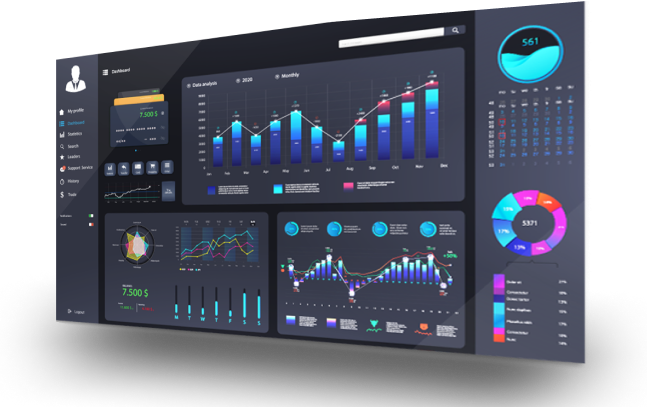How Google’s Latest Algorithm Updates Affect Your SEO: A Beginner’s Guide
Ever wondered why your website’s traffic suddenly drops or spikes after a Google update? As a beginner in SEO, keeping up with these algorithm changes can feel overwhelming. But don’t worry, this guide will help you understand recent Google updates and how to adjust your strategy to keep your website performing at its best.
What Exactly Is a Google Algorithm Update?
At its core, a Google algorithm is a set of rules that Google uses to decide which websites should appear at the top of search results. Whenever you type a query into Google, the algorithm evaluates millions of web pages to show you the most relevant and trustworthy answers. These rules aren’t set in stone; Google updates the search algorithm “several times a year” to ensure that search results remain useful, relevant, and in tune with user needs.
There are two types of updates: minor tweaks that make small adjustments and core updates, which are big changes that can significantly impact website rankings. Core updates typically affect many websites across various industries at once. These changes may sound intimidating, but their main goal is to improve the user experience.
Key Types of Google Algorithm Changes
Google’s algorithm is constantly evolving, but there are a few common types of updates that you should know about, as they directly affect your SEO efforts:
- Core Updates: These major changes impact rankings across various industries and often involve shifting how Google evaluates your site’s content, relevance, and authority. For instance, if a core update focuses on content quality, websites with well-researched and original content will likely see a boost, while others may drop in rankings.
- Spam Updates: Google has been updating its spam policies to target low-quality content out of the search experience especially targeting expired websites repurposed as spam sites.
- User Experience (UX) Updates: These updates focus on how users interact with your site. Google evaluates things like mobile-friendliness, page speed, and ease of navigation. A site that loads fast and offers a smooth experience across devices is more likely to rank higher after a UX update.
- Content Quality Updates: Google prioritizes websites with original, helpful, and relevant content. Thoroughly researched blog posts and articles that offer genuine value to readers are more likely to rank higher after updates. In contrast, websites featuring low-quality or duplicated content may see a decline in their rankings.
Understanding the Impact of Algorithm Updates on Your Site
After a Google algorithm update, it’s normal to see shifts in your site’s traffic and rankings. Some websites may experience an increase in visibility, while others may drop. This happens because Google re-evaluates your site’s content, structure, and performance based on its updated standards.
For instance, if Google introduces an update centered on user experience, a website that has recently enhanced its mobile usability and improved page load speed could see a significant boost in its search rankings. On the other hand, a website that is slow or challenging to navigate may see a decline in user engagement.
Rankings typically stabilize following the initial impact, and don’t react too quickly to changes in website traffic right after a core algorithm update. Rather, keep an eye on performance and adjust as needed. The key is to focus on long-term improvements in content quality, user experience, and overall site performance.
How to Use Google Analytics and Google Search Console to Monitor Your Site’s Performance
Dealing with Google’s algorithm changes doesn’t have to be stressful. Leverage these tools to quickly assess the impact of a Google algorithm update:
- Traffic Trends: Track overall traffic patterns to spot sudden drops or spikes related to updates.
- Traffic Sources: Identify if changes in organic search traffic align with algorithm shifts.
- Behavior Flow: Examine how users navigate your site to detect drops in engagement.
- Top Landing Pages: Focus on pages with reduced traffic to identify content or speed issues.
- Custom Alerts: Set up alerts to notify you of significant traffic fluctuations.
- Search Performance: Monitor search traffic, impressions, and CTR for sudden changes.
- Keyword Rankings: Analyze shifts in keyword rankings to adjust your SEO strategy.
- Index Coverage: Ensure all important pages are indexed properly after updates.
- Manual Actions: Check for any penalties that could affect your rankings.
- URL Inspection: Identify issues with individual pages that impact their ranking potential.
- Sitemap Submission: Keep your sitemap updated and submit it to help Google index your content.
Using these strategies will help you quickly identify and address any negative impact from algorithm updates, ensuring your site remains optimized for search visibility.
Stay Informed with Trusted SEO Resources
Keep up with algorithm changes by following trusted industry blogs and experts like the Google Search Center Blog, Moz, or Search Engine Journal. These sources often provide valuable insights on how to adapt your strategy when updates are announced.
Create High-Quality, User-Centric Content
Rather than trying to chase every algorithm change, focus on creating content that genuinely helps your audience. Google consistently rewards original, and informative content. By prioritizing the concerns of your readers, your site will naturally align with Google’s long-term goals.
Optimize for Mobile-Friendliness and UX
Ensure that your website is mobile-friendly, loads quickly, and offers easy navigation. With more searches happening on mobile devices, Google places a strong emphasis on user experience, especially for mobile users. Regularly check your site’s mobile performance to make sure it provides a smooth, fast experience.
Avoid Black-Hat SEO Techniques
Shortcuts like buying backlinks, keyword stuffing, or hiding text may result in short-term gains, but they carry long-term risks. Algorithm updates frequently target these types of practices, and sites that engage in them are often penalized. Stick to white-hat SEO techniques that focus on genuine content creation and organic link-building.
Adapt and Evolve with SEO
Google’s algorithm is constantly changing, and staying informed about these updates is extremely important to maintain a strong SEO strategy. By understanding the different types of updates mentioned – core, spam, user experience, and content quality, you’ll be better equipped to handle shifts in your rankings and improve your website.
Remember, these updates are designed to make the search experience better for users. If you focus on providing high-quality content, optimizing for mobile and user experience, and avoiding unethical SEO practices, your website will be more resilient to algorithm changes.
Ready to improve your website and navigate Google’s algorithm changes? Connect with one of our SEO experts today!










